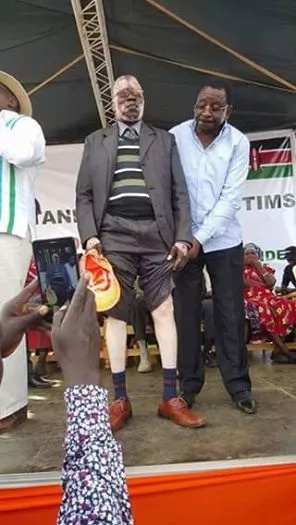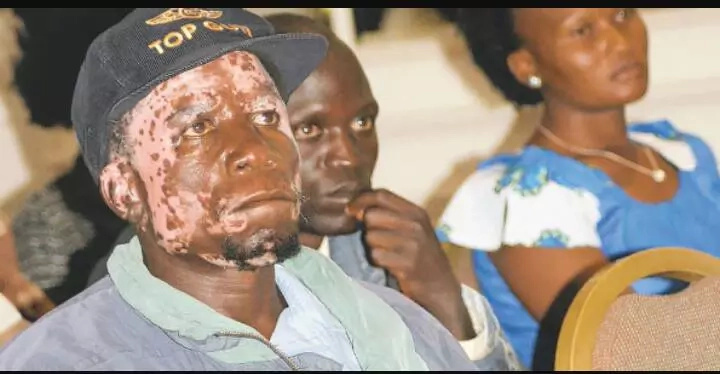
Siaya
Senator James Orengo on Saturday April 16, 2016 shows a crowd that this
man suffering from a skin condition. Orengo clamed that he was burnt
during the election chaos of 2007 in the Rift Valley.
It has however emerged that Bernard Ndege, the man who was paraded at a podium during a rally by Cord leaders Orengo and Johnson Muthama did not actually sustain any burns as it was stated.
The man, according to Daily Nation journalist Stella Cherono, has a skin condition called vitiligo that makes one’s skin appear as though they sustained bodily burns.
But Ndege is a victim of the post-election violence because he lost his two wives and nine children when their house was torched.
Cherono interviewed Ndege soon after the violence.
“He told me openly that he was not in the house when his family got burnt. With time however other people have used this to insinuate that he survived fire and the discolouration was as a result of PEV,” Cherono wrote in a Facebook post.

This
is the man who was paraded before a crowd at a rally in Kibra. Daily
Nation journalist Stella Cherono interviewed him ans said that he has a
skin condition called vitiligo. Photo by Stella Cherono.
Stella went on to comment that “losing your two wives and nine children is not easy, and he deserved to be compensated but I don’t think it’s right for Orengo and the rest to use Vitiligo as a mode of seeking sympathy and use it politically while turning a face on the truth to align vitiligo with PEV.”
The rally had been organised by the opposition to counter the one at Afraha Stadium in Nakuru County that had been called by President Uhuru Kenyatta to give thanks after his deputy William Ruto was set free.
The rally was apparently meant to show solidarity with the victims of the post-election violence.
Soon after the outcome of a bungled election in December 2007, an unprecedented and spontaneous violence broke out in Kenya leaving 1,333 dead and approximately 650,000 others displaced from their homes mostly in the Rift Valley region.
Communities that hitherto existed in tranquility rose against one another; people were burnt alive, others were hacked with machetes by the roadsides while homes and churches went up in flames.

No comments:
Post a Comment